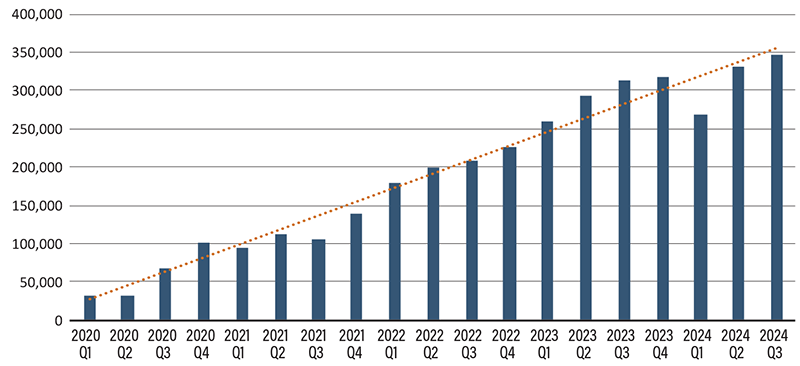ChargeScape’s Ambitions: What Electric Co-ops Need To Know

The newly announced partnership between Ford, BMW and Honda to create ChargeScape—a joint venture focused on optimizing electric vehicle (EV) charging and energy management—holds potential for the energy industry, but also raises some critical concerns for electric cooperatives. While the vision of connected EVs supporting the grid with bi-directional charging and vehicle-to-grid (V2G) capabilities sounds promising, it’s important to consider the practical and operational challenges this partnership might introduce, especially for smaller utilities and electric cooperatives.
“One potential advantage of ChargeScape is its aim to shift charging times based on grid demand and renewable energy availability, ostensibly helping cooperatives reduce peak load stress and integrate more renewables,” CFC Director of Utility Research & Policy Brian Sloboda said. “However, much of this potential depends on broad member participation and the interoperability of diverse EV brands and models. Electric cooperatives could face significant hurdles in reaching consistent engagement from members, many of whom may be concerned about privacy and reluctant to relinquish control over their charging habits. Furthermore, the logistical complexity of coordinating with an outside entity for grid management—especially one that operates at a national level—could reduce the cooperative’s flexibility and increase operational costs.”
The ambition to leverage V2G capabilities also introduces notable risks and complexities. While accessing stored energy in EV batteries during peak periods could theoretically reduce reliance on traditional resources, the practical realities are complex. V2G technology is still nascent, and questions remain regarding its impact on battery health and the real cost of frequent discharging.
“Battery wear concerns and uneven participation could limit the amount of energy actually available to cooperatives when they need it most, diminishing the benefits V2G promises,” Sloboda said. “Additionally, liability issues may arise if an EV battery suffers damage due to grid stress—a scenario that may place cooperatives in difficult positions if members are unhappy with the impacts of V2G participation.”
ChargeScape’s reliance on data-driven insights raises concerns about data privacy and management. While aggregated data on EV usage could support cooperatives in demand forecasting and infrastructure planning, privacy-conscious members may resist sharing details of their charging patterns.
“Additionally, cooperatives might find themselves reliant on ChargeScape for access to this data, introducing a dependency on an external, corporate-led entity,” Sloboda said. “For cooperatives committed to local, member-driven solutions, this could raise concerns about control and autonomy.”
U.S. Battery Electric Vehicle Sales by Quarter
 Source: Kelley Blue Book.
Source: Kelley Blue Book.
As of 2024, EV sales are growing steadily but still face barriers to widespread adoption. While major automakers like Ford, BMW and Honda are ramping up their EV production lines, EVs still account for a smaller segment of the overall automotive market, especially in the rural areas that electric cooperatives serve.
“High costs, limited charging infrastructure and range concerns remain obstacles for many prospective buyers,” Sloboda said. “Although tax incentives and rebates have improved affordability in urban areas, these incentives are less effective in rural communities, where EV chargers are sparse, and long commutes demand greater reliability.”
This slower EV adoption rate in cooperative-served areas may limit the immediate impact of programs like ChargeScape, as it will take time for enough members to participate in such initiatives to make a substantial difference in grid management.
“Electric cooperatives will need to consider this gradual adoption trend when weighing the potential benefits and investments in EV-focused partnerships,” Sloboda said.
While ChargeScape’s goals align with the industry’s push for sustainable energy, Sloboda stressed that cooperatives should critically assess the risks and practical limitations involved.
“Careful evaluation and a strong voice in any partnership will be essential for ensuring that cooperatives maintain their independence and uphold their mission of reliable, member-focused service,” Sloboda said.
